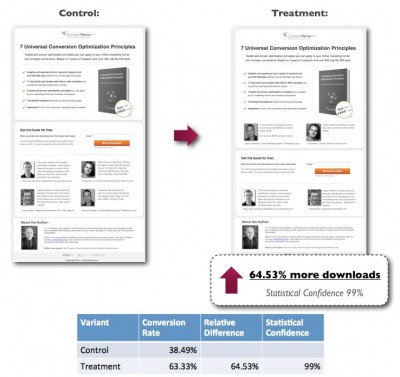The SaaS landscape can be a very competitive one. Think about verticals such as project management or accounting software – there can be many competitors within the same space, each one vying for a slice of the market.
So, what causes a customer to choose one option over another that is otherwise similar?
A lot tends to boil down to trust. There was something about the brand that they chose which made them feel that this was a company they could trust, perhaps more so than another.
Trust is never an easy thing to earn. It’s also something that can be lost if you give people a reason to distrust you.
How can a SaaS set out to build that trust with clients? We’re looking at a few ideas:
#1. Give clear descriptions
What sort of impression does your SaaS give when potential users first encounter it? One thing that many SaaS are guilty of is creating descriptions that often aren’t descriptive at all, at least not to a regular person who doesn’t already know you.
Word salads full of buzzwords and language that is virtually incomprehensible might be an attempt to sound smart, but in reality, people get turned off if they can’t determine what you’re about within a couple of seconds.
When you consider how you might go about looking for a SaaS solution, the chances are you’re like the 81% of shoppers who conduct research online first. What do you do if presented with many options? You probably look for a way to eliminate some of them, and if one of those options doesn’t grab you right away with a clear description, it will probably be one of the first on the discard pile.
Being precise with the descriptions you use on your website helps to engender trust because it conveys a sense of transparency. Some of the best examples out there tend to succinctly be able to describe “this is what we do” and “this is who we do it for.” Throwing in a whole lot of buzzword terms is unnecessary and often confusing.

#2. Design the first experience
How are customers first introduced to early runs of your software? In many companies, that first run where the customer and software meet is very much an accident. Intercom describes it;
“Here’s the software. Here’s a user. User meets software at an unpredictable angle and unpredictable speed. Mayhem ensues. Ambulance called.”
Now, if you want to build trust with customers, proper management of that first run experience is essential. They need a clear and compelling reason to return, which means that ideally, they have received some value from that first interaction. The Intercom post goes on to say:
“So, as UX designers we’ll first start by writing down these three goals: one awesome improvement for the user, one thing the business can hang its hat on, and one compelling reason to come back. Now we have to actually accomplish them. How are we doing to do that?”
You don’t need to get fussy with customizable features on that first run, but you do need to be able to deliver value to the user.
#3. Nurture communication
Customer success is an investment to start upon immediately in any SaaS. If you want people to trust you and come back, then they need to achieve something valuable from early interactions.
Part of a good customer success strategy is nurturing ongoing communication. Part of a good customer success process and strategy is nurturing ongoing communication. Rather than a customer signing up with you and then hearing nothing unless you want them to buy something else, it’s important to nurture your leads over time, let them get to know you better by communicating in a way that is valuable to them.
Think about the communication channels you have at your disposal. Anyone who signs up will be providing you with an email address, so communication that way is vital. For people who are checking you out and haven’t signed up for anything yet, consider using retargeting pixels so that you can present them with messaging via social media.
Speaking of social media, keep up a regular schedule of posts, providing valuable or interesting information that will appeal to your target audience. Consider ways you can demonstrate transparency through these channels – it’s all part of building trust with people.
ConversionXL talked about “the mere exposure effect,” a strategy that has been used for years by marketers. Exposure matters because we tend to subconsciously pick the option we have been seen to the most.
#4. Have good testimonials
Testimonials can be a powerful trust builder, yet many SaaS have not included them on their websites. According to Econsultancy, when a site has reviews, 63% of customers are more likely to make a purchase, while there is an average 18% uplift in sales.
Humans like testimonials because we’re always looking for social proof. Have other people like me used this and liked it? Or, do people I admire use this too? (This is especially true if you can get testimonials from any higher profile users).
Putting a face to the experience, whether it be a current or former client, is an incredibly effective way to humanize your brand. A valuable addition to your client testimonials could be incorporating video testimonials, which serve as engaging visual proof of the value of your service. Check out this resource for video testimonial samples. Not only do these videos provide additional credibility, but they also capture the emotion and depth of the experience that written testimonials may sometimes lack.
As ConversionXL points out, “where you put your testimonials is also an important factor”. If they get buried too deep within your site or below the fold, they may get missed altogether and therefore won’t contribute to building trust with customers. The article outlines a split test, where Michael Aagaard decided to use testimonials to encourage people to download his free ebook. As it turned out, placement did indeed make a difference (although of course, it would be worth split testing on your site to see what works best).

#5. Deliver value
Part of your lead nurturing strategy should always be to deliver some value to the customer. If you’re getting into the old “we have to send an email because it’s Wednesday” routine, then the chances are you’re not delivering value as you could be.
Every communication, every piece of content that you create needs to have your customer’s needs in mind. What problems do they have that need solving? What are their goals? You don’t have to create something huge every time, but if it delivers something small and valuable, it’s a great way to say “we know what we’re talking about” and build trust over time.
Looking at your target audience and segmenting them into clear groups so that you can target them with relevant content. If you take a look at HubSpot’s resources, they are a great example of delivering value through content. They have free templates, ebooks, and other resources which cover a wide range of activities for their target customers. They generate a lot of trust and goodwill by ensuring that they create tools people can use.
#6. Be available
When a customer needs a question answered, how easy is it for them to find the answer? What if something goes wrong or they have trouble with the software? A good knowledge base can go a long way toward helping, but many customers get frustrated when they can’t reach an actual person.
In fact, around 68% of customers leave after perceiving to have had a bad customer service experience, and poor service is a crucial driver of churn. Increasingly, companies are competing on their customer service above other things – this can mainly be the case if you are competing in a busy SaaS category!
To that end, put in systems such as a form builder with notification capabilities that make you available to customers and at a minimum, acknowledge their requests and provide an estimated follow-up time. A “contact us” form and knowledge base articles aren’t going to cut it if the user can’t find an answer to their question and doesn’t receive a response to email. Look into help desk services or customer chat, possibly even the use of chatbots to help out.
Final thoughts
Building trust with SaaS clients is vital if you want to keep them coming back. This means delivering value from their very first interaction, then consistently doing so over time. Be clear about who you are and what you do, and be memorable.
Every interaction is crafted with your target audience in mind. Trust is something that is earned and can easily be lost, so be a reliable service. Your customers should be able to trust you for quality information and superior service. That is how you can stand out in a crowded SaaS vertical.
